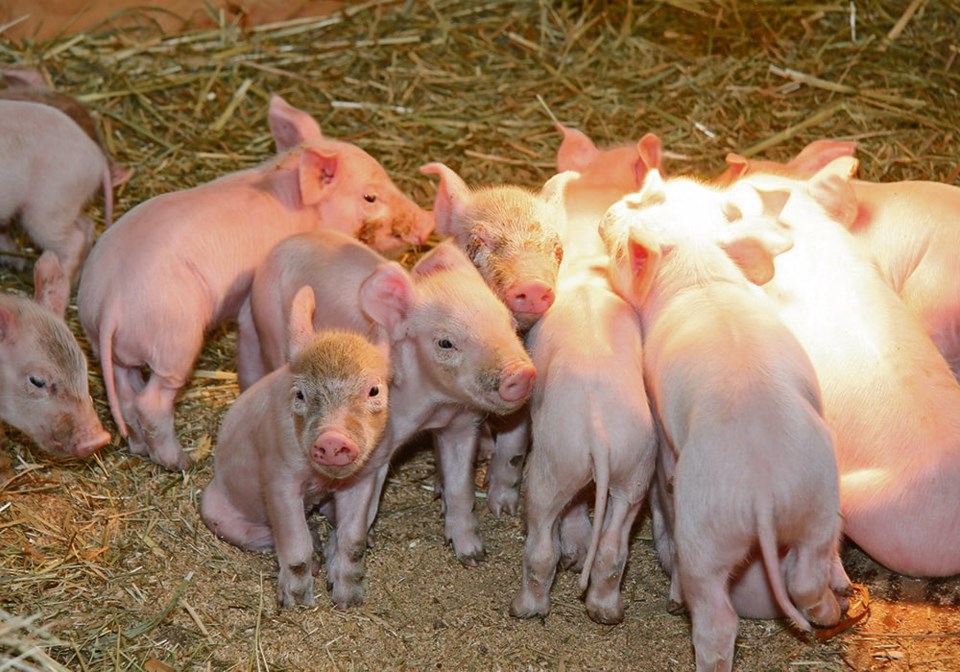Canada’s hog producers and veterinarians are breathing a sigh of relief after a new disease was spotted and managed before a surprise outbreak could occur.
Even though only three cases of sapovirus had appeared in late 2022, by early 2023, the Canada West Swine Health Intelligence Network had organized a rapid response.
“If the (veterinary) practitioners had been isolated, without having the opportunity to discuss — ‘hey, I found this weird case’ — there would have been just one case in Manitoba and (a couple) in Saskatchewan and the vets wouldn’t have known this could escalate,” Jette Christensen, manager of the CWSHIN, said in an interview.
Just two veterinarians noticed the “weird” cases of piglet diarrhea that were showing up in a handful of herds. The cases couldn’t be attributed to the usual suspects, so the vets began doing their own research.
During an early January discussion inside the network, the vets shared their suspicion that the cause was sapovirus, something that had never seemed to be an issue in the Canadian pig herd.
Baby pigs were getting sick with scours, mostly surviving, but often being about 1.5 pounds lighter at weaning, which hurts the pig’s long-term growth and health potential.
When diarrhea samples were sent to an Iowa laboratory for analysis, sapovirus proved to be the most likely culprit.
The CWSHIN brought together a task force of swine veterinary specialists and testing laboratories in early April to see if a Canadian polymerase chain reaction (PCR) test could be quickly developed because that would save crucial days in tackling new incidents. Without a test within Canada, vets had to laboriously rule out every other possible cause of piglet diarrhea before packing up samples to ship to the United States for testing.
The labs proved keen to tackle the new challenge. The Iowa lab provided the testing protocols, the labs tried them out against the infected western Canadian samples and soon they had a working prototype.
“We moved quickly to offer tests as an under-researched test, or under-development test,” said Yanyun Huang of Prairie Diagnostic Services in Saskatoon, which produced a PCR test that could isolate sapovirus.
Sapovirus had been a surprise in the U.S. as well, first appearing in 2019. Its family of diseases, the calici-virus clan, had been long known to live within pigs, but sapovirus as a scours-causer was new.
By late August, PDS had tested 19 samples of suspect diarrhea from prairie herds and found sapovirus in 84 percent. That doesn’t mean that these cases were due to sapovirus because other causes of diarrhea could have caused the sickness, but the fact that sapovirus was so prevalent was a revelation.
“We don’t know how much sapovirus is out there,” said Christensen.
“How frequent is it? Is it in all herds and only causes problems in certain circumstances? It could be very rare, in only a few herds. We don’t know.”
Why is it only becoming a problem now?
“We don’t know if something changed in the virus or something else,” said Christensen.
The tests used by PDS and others aren’t fully validated and are being used temporarily until a new PCR test can be developed, tested and receive full regulatory approval.
However, by being able to flag the existence of sapovirus in sick pigs, vets and producers can order a vaccine from the U.S. that appears to offer almost full control of the disease within a herd.
That’s great news for controlling something that has not become a major production challenge thanks to the rapid response to the threat.
“I thought that was amazing,” said Christensen of the speed with which the disease was spotted, identified, a test developed and system for treatment implemented.
“I haven’t seen that before.”
Bookmark SASKTODAY.ca, Saskatchewan's home page, at this link




